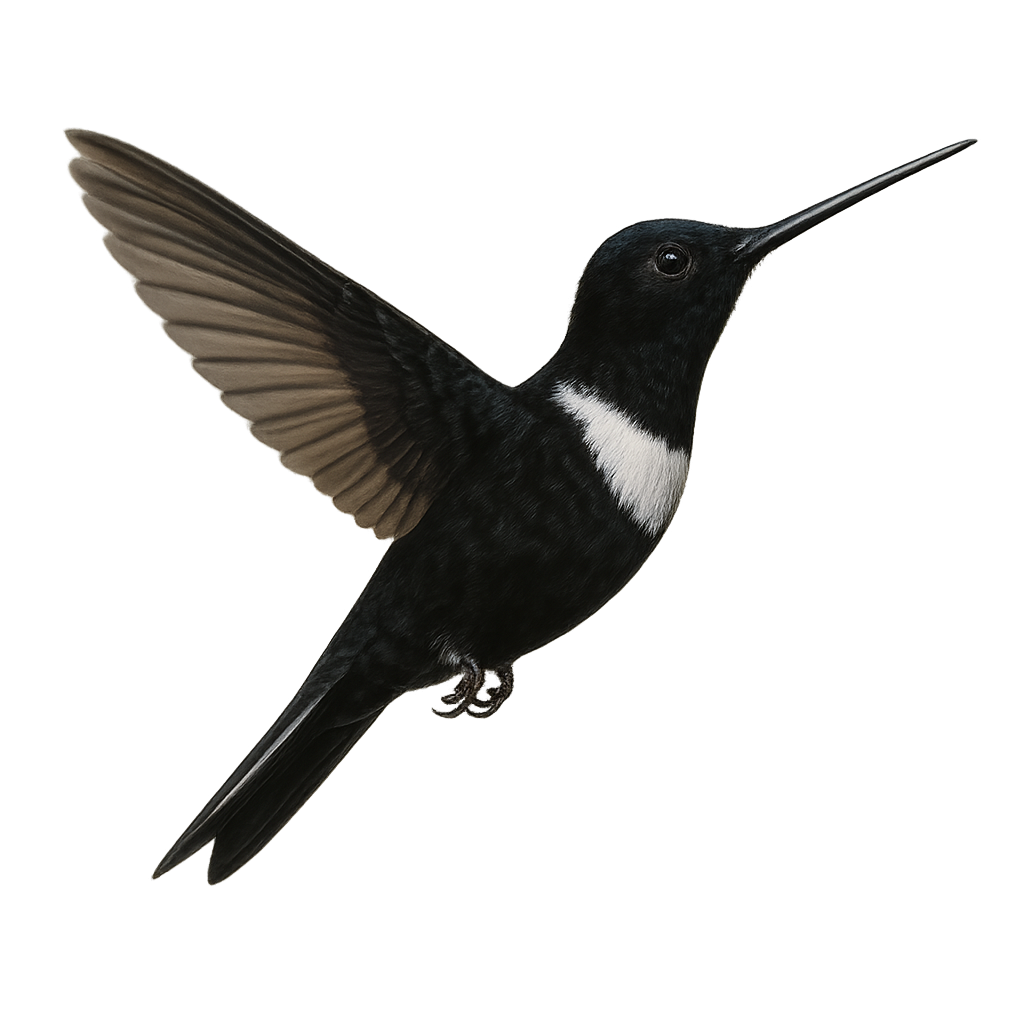Your wildlife photography guide.
Explore the black inca in detail, study its behavior, prepare your shots.
Where to observe and photograph the black inca in the wild
Learn where and when to spot the black inca in the wild, how to identify the species based on distinctive features, and what natural environments it inhabits. The WildlifePhotographer app offers tailored photography tips that reflect the black inca’s behavior, helping you capture better wildlife images. Explore the full species profile for key information including description, habitat, active periods, and approach techniques.
Black Inca
Scientific name: Coeligena prunellei

IUCN Status: Endangered
Family: TROCHILIDAE
Group: Birds
Sensitivity to human approach: Suspicious
Minimum approach distance: 10 m
Courtship display: March to May
Incubation: 15-17 jours
Hatchings: March to June
Habitat:
Humid forests, forest edges, mountainous areas
Activity period :
Primarily active during the day, with peak activity in the morning and late afternoon.
Identification and description:
The Black Inca, or Coeligena prunellei, is a hummingbird species endemic to the high-altitude humid forests of Colombia. It is characterized by its glossy black plumage with metallic sheen and a distinctive white patch on its chest. This hummingbird primarily feeds on nectar, using its long slender bill to hover from flower to flower, playing a vital role in plant pollination. Unfortunately, deforestation threatens its natural habitat, leading to a decline in its population. Conservation efforts are crucial to ensure its long-term survival.
Recommended lens:
400 mm – adjust based on distance, desired framing (portrait or habitat), and approach conditions.
Photography tips:
To photograph the Black Inca, choose sunny mornings when activity is at its peak. Use a 400mm or longer telephoto lens to capture precise details without disturbing the bird. Patience is key; wait near the flowers it frequents. Set your camera to a fast shutter speed to freeze the rapid movement of its wings. A tripod can be helpful to stabilize your equipment. Remember to maintain a safe distance of at least 10 m to avoid startling the bird.
The WildlifePhotographer App is coming soon!
Be the first to explore the best nature spots, track rutting seasons, log your observations, and observe more wildlife.
Already 1 439 wildlife lovers subscribed worldwide

